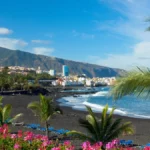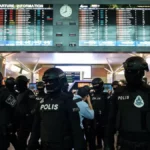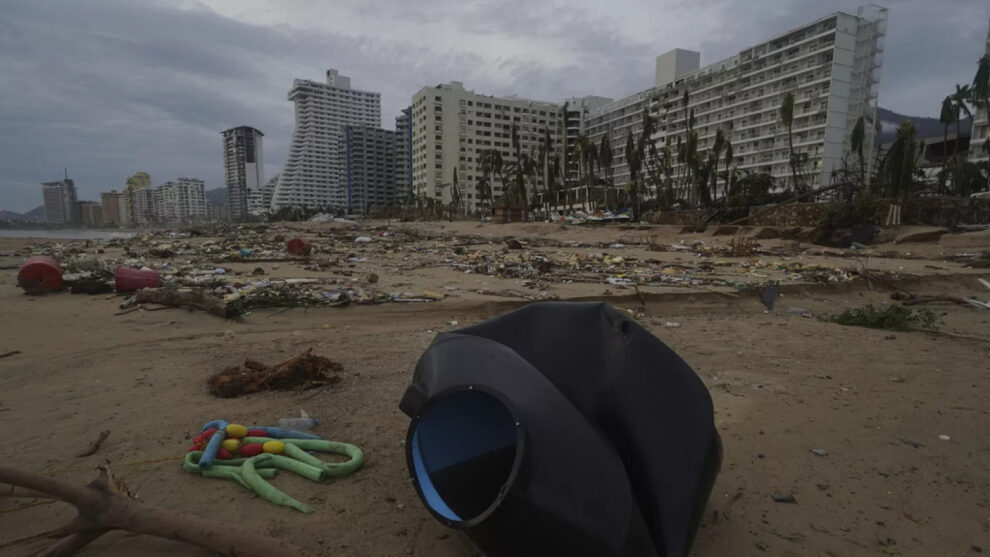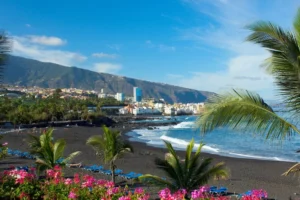The storm brought down power lines, damaged buildings and left almost a million people without electricity or communications. It is not yet known how many people have been injured.
A day after Hurricane Otis roared ashore in Acapulco, Mexico, unleashing massive floods and setting off looting, the resort city of nearly 1 million descended into chaos, leaving residents without electricity or internet service as the toll remained uncertain.
The early images and accounts were of extensive devastation, toppled trees and power lines lying in brown floodwaters that in some areas extended for miles. The resulting destruction delayed a comprehensive response by the government, which was still assessing the damage along Mexico’s Pacific coast, and made residents desperate.
Many of the once sleek beachfront hotels in Acapulco looked like toothless, shattered hulks a day after the Category 5 storm blew out hundreds – and possibly thousands – of windows.
There seemed to be a widespread frustration with authorities. While some 10,000 military troops were deployed to the area, they lacked the tools to clean tons of mud and fallen trees from the streets. Hundreds of trucks from the government electricity company arrived in Acapulco early Wednesday, but seemed at a loss as to how to restore power, with downed electricity lines lying in feet of mud and water.

Jakob Sauczuk was staying with a group of friends at a beachfront hotel when Otis hit. “We laid down on the floor, and some between beds,” Sauczuk said. “We prayed a lot.”
One of his friends showed reporters photos of the windowless, shattered rooms in the hotel. It looked as if someone had put clothes, beds and furniture in a blender, leaving a shredded mass.
Sauczuk complained that his group was given no warning, nor were offered safer shelter, by the hotel.
Pablo Navarro, an auto parts worker who was lodged in temporary accommodations at a beach front hotel, thought he might die in his 13th story hotel room.
“I took shelter in the bathroom, and thankfully the door held,” said Navarro. “But there were some rooms where the wind blew out the windows and the doors.”
Navarro stood Wednesday outside a discount grocery and household goods store near the hotel zone, as hundreds of people wrestled everything from packs of hot dogs and toilet paper to flat screen TVs out of the muddy store, struggling to push loaded metal shopping carts onto the mud-choked streets outside.
“This is out of control,” he said.

It took nearly all day Wednesday for authorities to partially reopen the main highway connecting Acapulco to the state capital Chilpancingo and Mexico City. The vital ground link allowed dozens of emergency vehicles, personnel and trucks carrying supplies to reach the battered port.
Acapulco’s commercial and military airports were still too badly damaged to resume flights.
Acapulco’s Diamond Zone, an oceanfront area replete with hotels, restaurants and other tourist attractions, looked to be mostly underwater in drone footage that Foro TV posted online Wednesday afternoon, with boulevards and bridges completely hidden by an enormous lake of brown water.
Large buildings had their walls and roofs partially or completely ripped off. Dislodged solar panels, cars and debris littered the lobby of one severely damaged hotel. People wandered up to their waists in water in some areas, while on other less-flooded streets soldiers shovelled rubble and fallen palm fronds from the pavement.
Wednesday night the city plunged into darkness. There was no phone service, but some people were able to use satellite phones loaned by the Red Cross to let family members know they were OK.

On Tuesday, Otis took many by surprise when it rapidly strengthened from a tropical storm to a powerful Category 5 as it tore along the coast.
“It’s one thing to have a Category 5 hurricane make landfall somewhere when you’re expecting it or expecting a strong hurricane, but to have it happen when you’re not expecting anything to happen is truly a nightmare,” said Brian McNoldy, a hurricane researcher at the University of Miami.
Acapulco, Tecpan and other towns along the Costa Grande in Guerrero were hit hard, Mexican President Andrés Manuel López Obrador said Wednesday morning. He said conditions were so bad that communication with the area had been “completely lost.”
Source : Euro News















